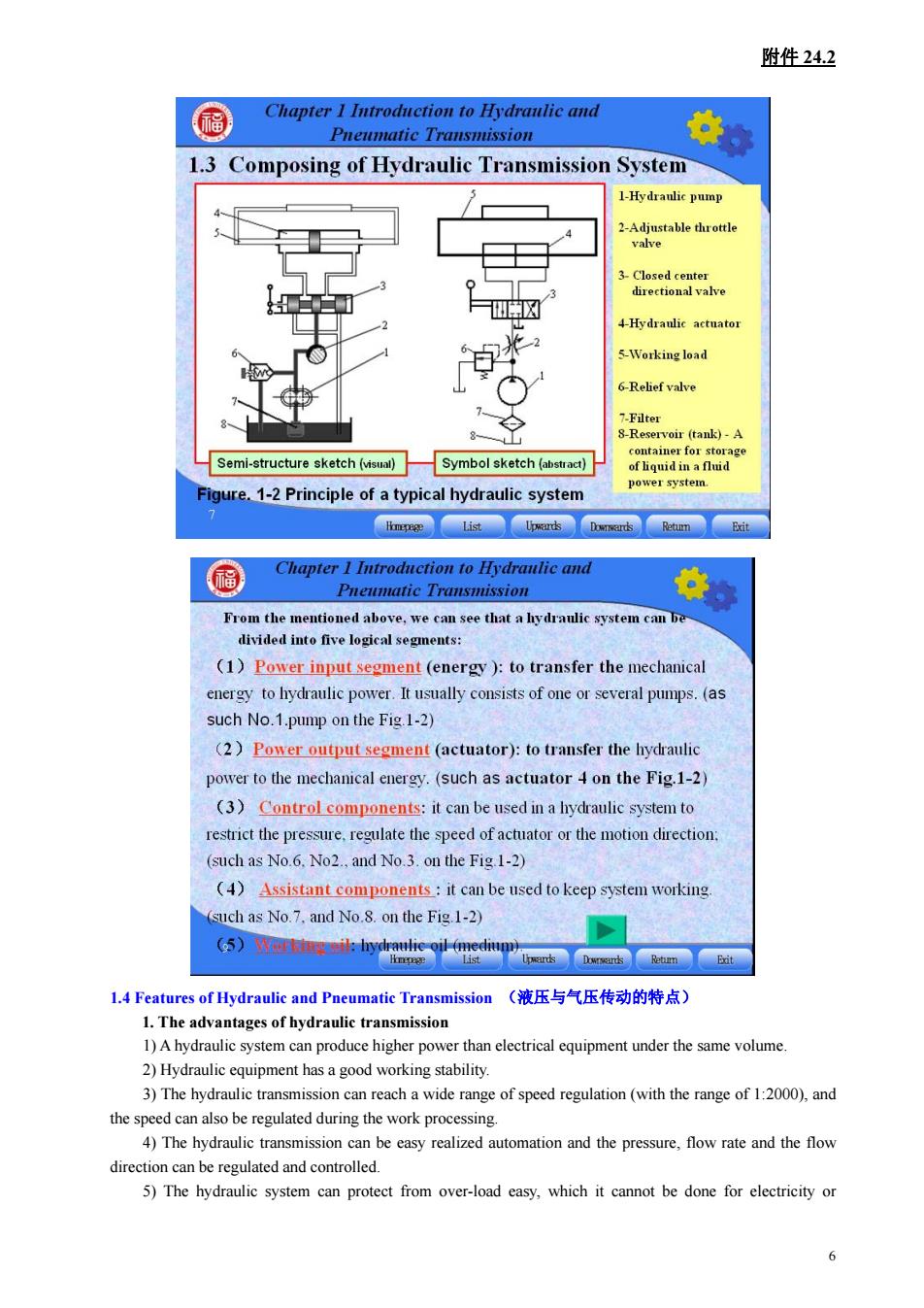正在加载图片...

附件24.2 Chapter I Introduction to Hydranlic and Pneumatic Transmission 1.3 Composing of Hydraulic Transmission System 1-Hydraulic pump alve ☒ 4-Hydranlic actuator 5-Working load -Reliefvalve voir (tank)-A Semi-structure sketch (vs) Symbol sketch (ab) re.1-2 Principle of a typical hydraulic system ⑧ Chapter I Introduction to Hydraulie and Pneimatic Transmission Frem the mentioned above,we can see that ystem ca ivided into five logical segnents: (1)Power input segment (energy )to transfer the mechanical energy to hydraulic power.It usually consists of one or several pumps.(a such No.1.pump on the Fig.1-2) (2)Power ouput segment (actuator):to transfer the hydralic power to the mechanical energy.(such as actuator 4 on the Fig.1-2) (3)Control components:it can be used in a hydraulic system to restrict the pressure.regulate the speed of actuator or the motion direction. (such as No.6.No2.and No.3.on the Fig1-2) (4)Assistant components:it can be used to keep system working. (such as No.7.and No.8.on the Fig.1-2) 1.4 Features of Hydraulic and Pneumatic Transmission(液压与气压传动的特点) 1.The advantages of hydraulic transmission 1)A hydraulic system can produce higher power than electrical equipment under the same volume 2)Hydraulic equipment has a good working stability. 3)The hydraulic tra smission can reach a wide range of speed regulation(with the range of 1:000)and the speed can also be regulated during the work processing. 4)The hydraulic transmission can be easy realized automation and the pressure.flow rate and the flow direction can be regulated and controlled. 5)The hydraulic system can protect from over-load easy.which it cannot be done for electricity or 6 附件 24.2 1.4 Features of Hydraulic and Pneumatic Transmission (液压与气压传动的特点) 1. The advantages of hydraulic transmission 1) A hydraulic system can produce higher power than electrical equipment under the same volume. 2) Hydraulic equipment has a good working stability. 3) The hydraulic transmission can reach a wide range of speed regulation (with the range of 1:2000), and the speed can also be regulated during the work processing. 4) The hydraulic transmission can be easy realized automation and the pressure, flow rate and the flow direction can be regulated and controlled. 5) The hydraulic system can protect from over-load easy, which it cannot be done for electricity or 6